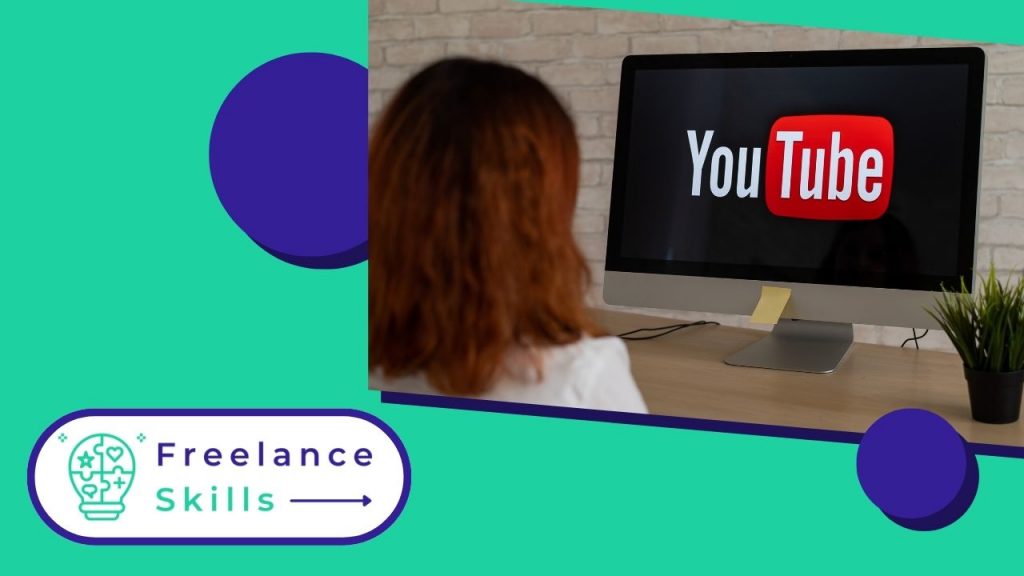A viral video isn’t a win for a brand. It’s just an amazing video. It’s a unique thing in itself and has little to do with a brand. If you really want to use YouTube effectively, we recommend that you take the time to cultivate a channel so that your brand has a personality. Basically, the principle boils down to regularly educating your audience or clientele on topics that interest them. If you focus on consistency, you’ll create an extremely valuable asset: an audience your brand can rely on in the future.
What is a YouTube channel audience?
An audience for a YouTube channel refers to all the people who regularly watch the videos published on that channel. This audience can be made up of occasional viewers, loyal fans or new visitors. It is essentially made up of people who are interested in the content offered by the channel and who interact with it, whether by watching the videos, leaving comments, subscribing to the channel or sharing the videos with other users. Having an engaged audience is crucial to the success of a YouTube channel, as it can lead to greater visibility, increased subscribers and monetization opportunities for the content creator.
Why develop the audience of a YouTube channel?
Developing the audience of a YouTube channel is crucial for several reasons, both for content creators and for brands or companies that use this platform as a communication and marketing tool.
Increased visibility and extended reach
By increasing the audience for a YouTube channel, creators can extend their reach and visibility. The more viewers who regularly watch videos, the greater the possibility that content will be shared and discovered by new audiences. This can lead to organic audience growth over time.
Audience engagement and loyalty
.
A larger audience creates a more engaged community. Loyal viewers are more likely to comment, share and interact with content, strengthening the sense of community around the channel. This can encourage other viewers to engage too, creating a positive snowball effect.
Monetization opportunities and partnerships
A large, engaged audience opens the door to a variety of monetization opportunities. Creators can generate revenue from YouTube advertising, brand partnerships, or even by selling their own products or services. The larger and more active the audience, the more attractive these opportunities are to potential advertisers and partners.
Influence and authority in the niche
YouTube channels with a significant audience often become authorities in their specific field or niche. Creators can become recognized influencers, able to sway the opinions and purchasing decisions of their audience. This can also open doors to rewarding collaborations and professional opportunities.
What are the best practices for building an audience for a YouTube channel?
To grow a YouTube channel’s audience, here are some best practices:
Optimize for your audience, not page views
You don’t want to generate traffic, you want to build an audience. While the difference may seem subtle, it’s actually the determining factor in this strategy. Many people want a “viral video” for their brand, but what happens when your viral video isn’t even hosted on your own channel? Instead of aiming for a viral video, strive to build your channel consistently. The two can go hand in hand, but the former only generates unique page views, and the latter is all about building an audience. If you have an audience, you can build a brand relationship with them. Even if you’re trying to create a video with the aim of going viral, it shouldn’t be completely unrelated to your brand.
There are many advantages to creating a channel. If you establish an active community, you’ll get better results on every new video, because the audience will be willing to watch and share your content. When you measure success from the start, any engagement is good engagement. Your probability, of getting a subscriber on the first video isn’t high. You just want people to care enough to make noise. There’s an inherent value in brand awareness, even if it’s not on your brand property.
Bringing value to your viewers
On Youtube, put education first and entertainment second. Determine the utilitarian value of the content. In other words, what does the viewer get out of it? The fundamental rule is to educate your viewer. That doesn’t mean you don’t have to understand the entertainment part, just that it should serve as the sizzle of the educational steak. Having recurring characters and gags is a proven method of making content more consistent. While these videos are extremely powerful in terms of virality, the most important point is that the audience becomes naturally familiar with the characters.
This can present a challenge, as the characters are and should remain only examples of a broader current theme. Brands need to find the right fit when working with these characters, who are usually celebrities. Visualize for a minute these sets of news where a person can stick their head through a hole and become the head of a cartoon body and get taken for a photo. Basically, it’s the same concept. Brands need to connect celebrities to their sets and become the frame that surrounds them. Unfortunately, most brands do the opposite. They try to plug into the celebrity’s frame. It simply doesn’t work.
Develop a publishing cadence: taking advantage of economies of scale
As you may have gathered, quantity matters when it comes to building a channel and audience on YouTube. When you’re just starting out, you’ll most likely have a limited budget to test these ideas and strategies for your brand. That’s completely understandable. Since quantity and cadence are crucial (as is consistent frequency), your strategy should be to compress as many video shoots into as few separate meetings as possible.
Compress more shoots into fewer trips to reduce fixed costs such as set-up, travel, hiring, etc. Even for low quality and low production costs, videos can be expensive. You’ll need to take on a freelance editor, a celebrity or micro-celebrity, stylists and other staff members. If you’re new to YouTube, you can shoot four short videos a day for three days, which means you’ll have twelve videos. That’s enough to last you once a week for three months, or once a month for a year. We don’t recommend aiming for much more frequency than that until you have a larger budget.
Vous avez aimé cet article ? Aidez-nous en mettant 5 étoiles !
Your page rank:









